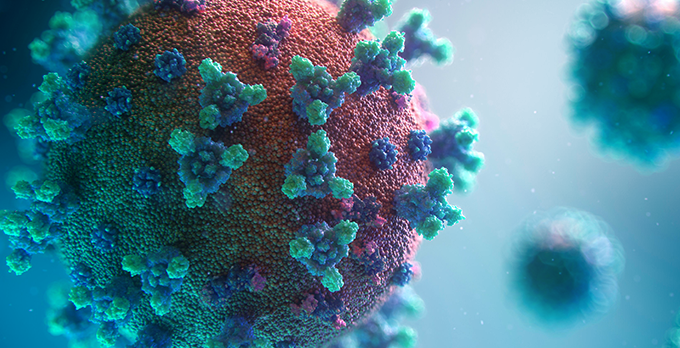It has been nearly four years since New Mexico recorded its first COVID cases, and officials with Centers for Disease Control and Prevention (CDC) just released new respiratory virus recommendations.
Meghan Brett, MD, an infectious diseases doctor and epidemiologist for The University of New Mexico Hospital, said the updated guidance comes at a time when there are more protections and effective treatments to reduce the severity of COVID infections.

“I would also argue that the virus itself has changed. The virus has evolved, such that it has become more of an upper respiratory infection rather than a lower respiratory infection for most people, and I think that has changed the rate of hospitalizations. It has changed the disease severity too.”
What is the new guidance?
- Self-isolate until your respiratory symptoms are improving, and you have not had a fever for at least 24 hours.
- After symptoms improve, you can return to normal activities, but consider wearing a mask in public for five days.
Brett said to also consider staying away from people who are at a higher risk for more severe COVID cases.
“It is worth protecting others who may be prone to severe types of infections,” she said. “For example, if you're feeling sick, it is not a great time to go visit your grandmother, and it is still reasonable to wear a mask to reduce the risk of transmission.”
Brett recommends distancing from people who are over the age of 65, immunocompromised, or have a pre-existing condition, for up to 10 days after the start of your symptoms.
She also recommends testing for COVID multiple times at home or with your primary care provider, because it is possible to have symptoms and not test positive for the virus for several days from the time your symptoms start.
“Antigen—or at-home testing—is still effective, despite the change in strains of this virus,” Brett said. “Because of vaccination and people having been infected with COVID, we have better immunity. So, our immune systems respond better to COVID at this point in time. The challenge now is that when the virus peaks, it is usually on day four or day five, which is different than it was three years ago.”
What guidance stays the same?
- Stay home if you are not feeling well.
- If you have symptoms and underlying medical conditions, then it is important to get tested for COVID or influenza because you can get treatment for both infections. This helps reduce your risk of going to the hospital.
- Stay up to date with vaccinations such as flu, COVID, and now RSV.
- Practice good hygiene: wash hands often, cover coughs and sneezes, clean frequently touched areas.
Brett said this new guidance is for the general public. Health care workers will continue to follow the previous CDC guidelines for COVID and other respiratory viruses. Those include taking a PCR for COVID, or two antigen tests 48 hours apart, and staying home for five days if a result is positive. They should continue to wear a mask at work from days five to 10, from the time they start feeling symptoms.
Brett also said recent advancements in COVID response, including vaccines and treatment, do not mean communities no longer have to deal with this virus.
“COVID infections are still happening, and people with COVID infection can still feel quite ill for days and be at risk for Long COVID, even with mild infections,” she said. “What has changed is the severity of the infection for most patients due to immunity, effective treatments, and the change in the virus itself that makes the infection less severe. So, it’s important to continue to protect ourselves with vaccination, effective respiratory hygiene practices, and self-isolating when we’re sick for all respiratory viruses.”
Click here for more background on the CDC’s updated respiratory virus guidance.
